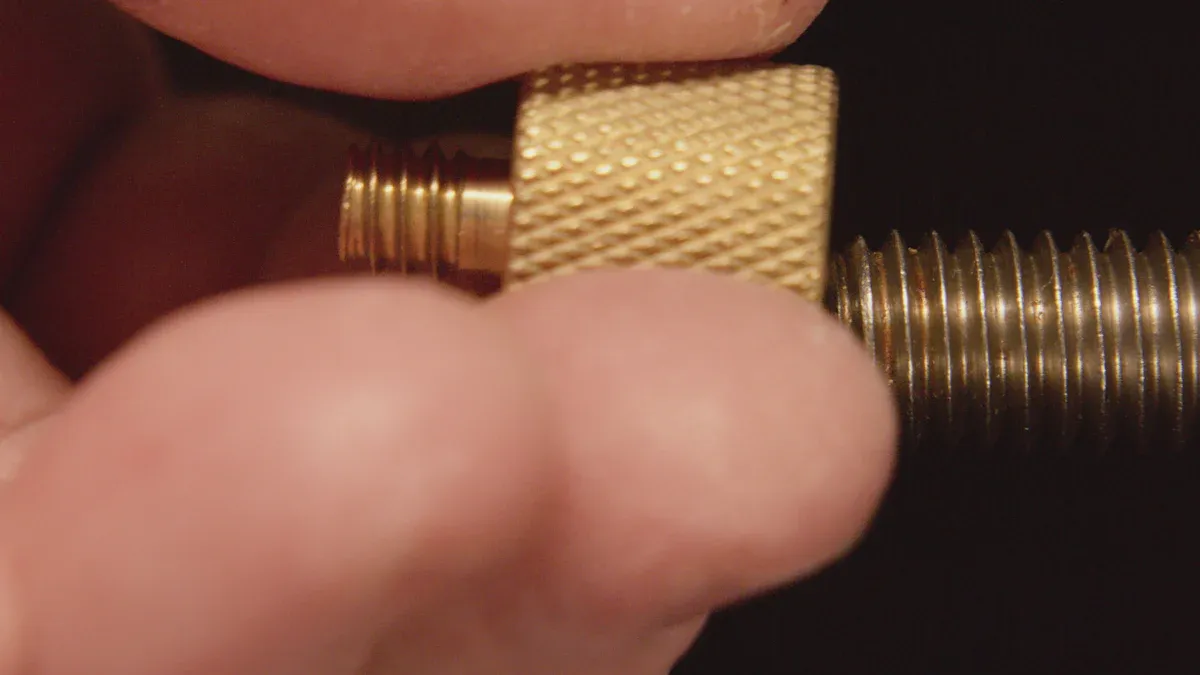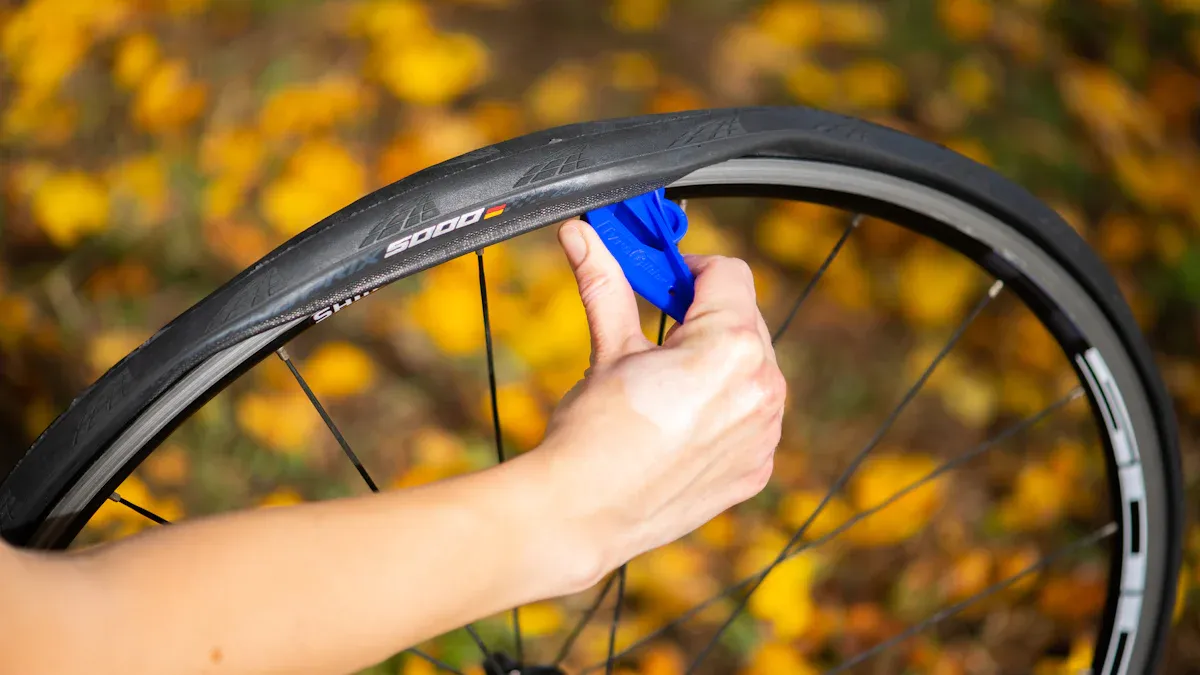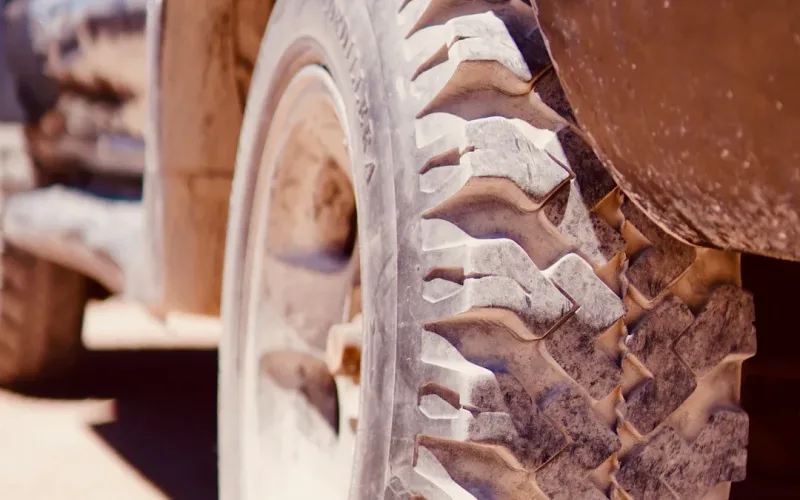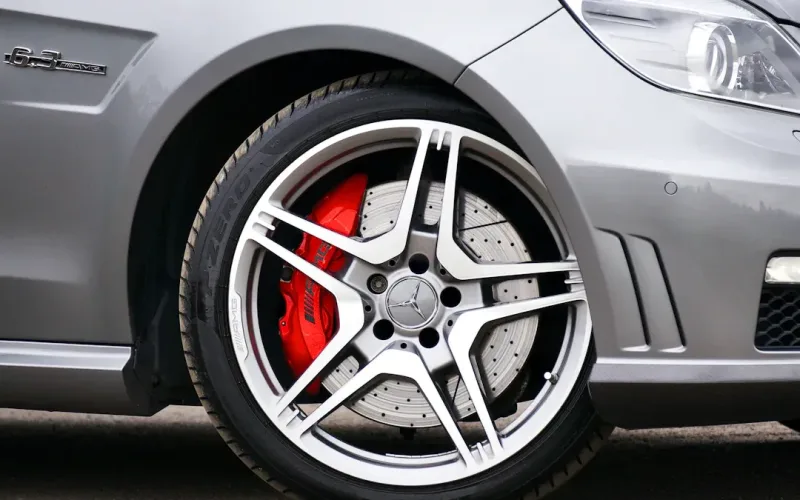

admin1
August 13, 2025
How the Tire Schrader Valve Works on Your Car

The tire schrader valve plays a crucial role in keeping your tire pressure just right for safe driving. When you press the center pin, the valve lets air flow in or out, then seals tightly to keep the pressure steady. Experts warn that underinflated tires can triple your risk of blowouts and accidents. In fact, nearly 35% of vehicle defect-related crashes link back to tire failures, often caused by poor tire pressure. By understanding how your tire schrader valve works, you take an important step toward safer driving and longer-lasting tires.
What Is a Tire Schrader Valve?
The Standard Tire Valve for Cars
You see the Schrader valve on almost every car tire today. This valve has become the standard for cars, trucks, and motorcycles because it is strong, reliable, and easy to use. The design started in the early 1890s when August Schrader invented it for pneumatic tires. Over time, engineers improved the valve to meet the needs of modern vehicles. The table below shows how the Schrader valve has changed and grown in the automotive world:
| Period | Key Developments and Innovations |
|---|---|
| Early 1890s | August Schrader invents the valve for pneumatic tires, initially for bicycles. |
| 1892 | Valve design patented; George H. F. Schrader credited with experimental work and patenting. |
| 1898 | Introduction of replaceable valve core, enhancing usability and maintenance. |
| 1950s | Development of tubeless tire valves for automotive use, adapting to modern tire technology. |
| 1959 | Introduction of nonstick Teflon™ washers to improve valve performance. |
| 1960 | Schrader acquires European tire valve manufacturer and expands operations in France. |
| 1979 | Opening of passenger tubeless tire valve plant in Monroe, NC, increasing production capacity for automotive valves. |
| 1990 | Development of tire pressure monitoring systems (TPMS) for vehicles, integrating electronics with valve technology. |
| 1992 | Introduction of high-pressure tubeless tire valves and expansion into fuel system valves for electronic fuel injection. |
| 1997 | Launch of Schrader Remote Tire Pressure Monitoring System, advancing automotive safety and monitoring. |
| 2007 | Introduction of smart valves combining valves with electronic solenoids for automotive applications. |
| 2014 | Release of new HFO-1234yf air conditioning valves for automotive markets. |
| 2018 | Introduction of MINI PRV-DR valve, continuing innovation in automotive valve technology. |
Today, the tire schrader valve is a key part of every car’s safety system. You depend on it to keep your tire pressure steady and your ride smooth.
Key Features and How to Identify a Schrader Valve
You can spot a Schrader valve by its sturdy, metal stem and the small pin in the center. This pin opens when you press it, letting air in or out. The valve uses a spring to keep the pin closed, which seals the air inside your tire. Most air pumps at gas stations fit Schrader valves, so you do not need special tools or adapters.
Here is a quick comparison to help you identify a Schrader valve:
| Characteristic | Schrader Valve | Other Valves (e.g., Presta) |
|---|---|---|
| Stem Diameter | 8 mm | 6 mm (Presta) |
| Valve Mechanism | Spring-loaded pin that closes valve when not depressed | Air pressure and knurled nut to keep shut (Presta) |
| Usage | Universal on car, truck, motorcycle tires | Mostly on bicycle tubes |
| Sealing Complexity | Requires two seals, more complex and heavier | Single seal, simpler |
| Compatibility with Pumps | Compatible with standard air-pump equipment without adapters | Requires adapters or special pumps |
| Thread Standardization | Standardized thread size for universal caps and tools | Varies |
| Vulnerability to Debris | Spring-loaded pin can be impaired by debris | Less vulnerable due to simpler mechanism |
| Integration with TPMS | Supports Tire Pressure Monitoring Systems | Generally not integrated |
You will find the Schrader valve on almost every car tire because it is tough and easy to maintain. The design allows you to check air pressure quickly and replace the valve core if needed. This makes the Schrader valve the best choice for most drivers who want a safe and simple tire valve.
Schrader Valve Structure and Components

Main Parts of the Tire Valve
When you look at a schrader valve, you see a small but powerful device. Each part has a special job to keep your tire safe and filled with air. Here are the main parts you will find in a typical schrader valve:
- Valve Stem: This is the outer metal tube you see sticking out from your tire. It holds all the other parts inside.
- Valve Core: This sits inside the stem and contains the moving pieces that control air flow.
- Spring (Helical Spring): The spring wraps around the valve pin. It pushes the pin and plug back into place after you finish adding or releasing air.
- Valve Pin: This thin rod runs through the center of the core. When you press it, you open the valve.
- Mushroom-shaped Plug: This small piece seals the opening. It presses against the valve seat to stop air from leaking.
- Valve Cap: This screws onto the top of the stem. It keeps dirt and water out of the schrader valve.
Tip: Always replace the valve cap after checking your tire pressure. This simple step helps protect the schrader valve from dust and moisture.
How Each Component Works Together
The schrader valve uses teamwork between its parts to keep your tire at the right pressure. When you press the valve pin with an air pump, the spring inside compresses. This action lifts the mushroom-shaped plug away from the valve seat. Air flows into the tire. When you stop pressing, the spring pushes the pin and plug back into place. The plug seals tightly against the seat, so air cannot escape.
The table below shows how each part works in the schrader valve mechanism:
| Component | Role in Schrader Valve Mechanism |
|---|---|
| Spring (helical) | Pushes the plug against the seat, sealing the valve when not in use. |
| Valve Pin | Lets you open the valve by pressing it, which moves the plug and allows air flow. |
| Mushroom-shaped Plug | Seals the opening, stopping air from leaking out of the tire. |
| Internal Tire Pressure | Helps the spring keep the plug sealed, making sure the valve stays closed. |
| External Depression | Happens when you press the pin, opening the valve for air to move in or out. |
This design means the schrader valve only lets air move when you want it to. The spring and plug work together with the tire’s air pressure to keep the seal strong. You can trust this system to hold air inside your tire, so you stay safe on the road.
How Does a Schrader Valve Work?
Air Inflation: Letting Air In
When you want to add air to your tire, you use the schrader valve. You press the nozzle of an air pump onto the valve stem. The pump pushes down the small pin inside the valve. This action opens the valve and lets air flow into the tire. You can hear the air moving as the pressure increases. The schrader valve allows you to control tire inflation easily. You watch the gauge on the pump to check the tire pressure. If the pressure is too low, you keep pumping until the gauge shows the right number. Most car owners use this process at gas stations or at home with a portable air compressor.
Tip: Always check your tire pressure before long trips. Proper inflation helps your tires last longer and keeps you safe on the road.
Air Sealing: Keeping Pressure Inside
After you finish tire inflation, you remove the pump. The schrader valve uses a spring and a rubber plug to seal the opening. The spring pushes the plug against the valve seat. This seal keeps the air inside your tire. The pressure from the air inside the tire also helps hold the plug in place. You do not need to do anything extra. The schrader valve works automatically to keep the pressure steady. You can trust this system to protect your tire from leaks. The valve cap adds another layer of protection by blocking dirt and moisture.
| Step | What Happens in the Valve | Result for Your Tire |
|---|---|---|
| Remove air pump | Spring pushes plug to seal opening | Air stays inside |
| Tire pressure rises | Plug holds tight against valve seat | Pressure remains steady |
| Add valve cap | Cap blocks debris and water | Valve stays clean |
Deflation: Releasing Air Safely
Sometimes you need to lower the pressure in your tire. You might do this if the tire inflation is too high or if you drive on rough terrain. To release air, you press the pin in the center of the schrader valve. You can use a small tool or even the tip of a pen. When you press the pin, the valve opens and lets air escape. You hear a hissing sound as the pressure drops. You stop pressing the pin when the tire reaches the right pressure. The schrader valve gives you full control over deflation. You can adjust the pressure in small steps to match your needs.
Note: Always check the tire pressure after deflation. Driving with low pressure can damage your tire and reduce safety.
The schrader valve makes tire inflation, sealing, and deflation simple for you. You do not need special skills or tools. You only need to know how does a schrader valve work to keep your tires in top shape.
Using the Schrader Valve for Tire Maintenance

How to Inflate Your Tires with a Schrader Valve
You can keep your car safe and running smoothly by knowing how to inflate your tires with a schrader valve. Follow these steps to make sure you do it right every time:
- Remove the valve cap from the tire’s schrader valve. Place it somewhere safe so you do not lose it.
- Clean the valve stem with a cloth to remove any dirt or debris. This helps prevent contamination inside the valve.
- Attach the inflator’s hose securely to the schrader valve. Make sure the fit is snug to avoid air leaks.
- Set your inflator to the correct mode and select the desired pressure (PSI) for your tire.
- Start the inflator. Many modern inflators will automatically stop when the target pressure is reached.
- Detach the hose quickly and replace the valve cap to keep out dust and moisture.
- Double-check the final tire pressure using a reliable gauge.
Tip: Check your tire pressure at least once a month and before long trips. Regular checks help you catch slow leaks early and keep your tires in top shape.
The schrader valve uses a spring-loaded plunger inside the stem. When you connect the air hose, the fitting presses the plunger down, opening the valve. Compressed air flows into the tire until the desired pressure is reached. When you remove the hose, the plunger snaps back, sealing the valve and keeping the air inside. You may hear a brief hiss as the valve closes, which is normal.
Improper inflation can cause air loss if the valve shell is loose or worn. Always make sure the valve is tightly fitted and in good condition. This simple habit helps you avoid pressure drops and keeps your tires performing well.
How to Deflate Your Tires Safely
Sometimes you need to deflate your tire, such as when the pressure is too high or you need better traction on rough terrain. The schrader valve makes this process easy and safe. Here’s how you can do it:
- Remove the valve cap from the schrader valve.
- Use a small tool, like a valve core tool or even the tip of a pen, to gently press the pin in the center of the valve.
- Hold the pin down until you hear air escaping. Watch the tire pressure with a gauge as you go.
- Release the pin when the tire reaches the desired pressure.
- Replace the valve cap to protect the valve from dirt and moisture.
Note: Always check the pressure after you deflate the tire. Driving with low pressure can damage the tire and reduce safety.
If you need to release a large amount of air, you can use a valve core removal tool to unscrew the core. This allows air to escape quickly. Only use this method if you plan to repair or replace the tire, since removing the core lets all the air out.
Checking for Leaks and Common Issues
Regular inspection of your schrader valve helps you catch leaks and other problems before they become serious. Here are some best practices for checking for leaks and keeping your valve in good condition:
- Apply soapy water to the valve stem and watch for bubbles. Bubbles mean air is escaping from the valve.
- Make sure the valve core is fully tightened. Use a valve core tool if needed.
- Submerge the valve in water to check for tiny bubbles, which can reveal slow leaks.
- Replace the valve core if you find a leak that tightening does not fix.
- Always keep the valve cap in place to block dirt and moisture.
Other common issues include corrosion, especially after winter driving or exposure to road salt. Inspect the valve stem for signs of rust, cracking, or missing caps. Use brass or nickel-plated valve cores with brass stems to prevent corrosion. Replace the TPMS service kit whenever you remove the tire from the wheel to avoid slow leaks.
Tip: Regularly inspect and clean your schrader valve. Lubricate moving parts and replace worn seals or damaged cores to prevent leaks and maintain proper tire inflation.
Environmental factors like temperature and humidity can also affect your schrader valve. High temperatures can speed up wear, while cold weather can cause pressure drops. Humidity and moisture may lead to corrosion. Parking in shaded areas and keeping valve caps on can help protect your valve and extend its life.
By following these steps, you keep your tires safe and ready for the road. Proper maintenance of your schrader valve helps you avoid unexpected flats and costly repair bills.
Tips for Maintaining Your Tire Schrader Valve
Taking care of your schrader valve helps you keep your tire pressure steady and your car safe. You can follow these simple tips to make sure your valve works well and lasts longer.
1. Inspect Regularly
Check your schrader valve every time you check your tire pressure. Look for cracks, rust, or dirt on the valve stem. If you see any damage, replace the valve right away. A damaged valve can cause slow leaks and lead to flat tires.
2. Keep the Valve Cap On
Always screw the valve cap back on after checking or inflating your tire. The cap keeps out dirt, water, and road salt. This small step protects the valve core and helps prevent corrosion.
3. Clean Before Use
Wipe the valve stem with a clean cloth before attaching an air pump. Dirt or debris can get inside the valve and cause leaks. Clean valves work better and last longer.
4. Replace When Needed
A schrader valve is inexpensive to replace—usually around $10. If you notice air leaks or if the valve core feels loose, replace it as soon as possible. This small cost can save you from expensive tire repairs or replacements caused by valve failure.
5. Test for Leaks
You can use soapy water to check for leaks. Put a few drops on the valve and watch for bubbles. If you see bubbles, air is escaping. Tighten the valve core or replace it if needed.
6. Choose Quality Valves
Pick valves made from corrosion-resistant materials like brass with nickel-plated cores. High-quality valves meet strict industry standards, such as ISO 9001 certification. These standards help ensure your valve can handle high pressure and last a long time.
7. Support Recycling
When you replace a schrader valve, dispose of the old one properly. Improper disposal can harm the environment. Many recycling programs accept metal valves and use special tools to make sure they are empty and safe. Recycling helps reduce waste and keeps hazardous materials out of landfills.
8. Stay Updated with Technology
New schrader valve designs use lightweight materials and advanced sealing technology. Some even have smart sensors that send real-time pressure data to your phone. These features help you spot problems early and keep your tire in top shape.
Tip: Regular maintenance of your schrader valve not only keeps your tire pressure steady but also saves you money in the long run. A well-maintained valve prevents leaks, reduces the risk of tire damage, and supports safer driving.
| Maintenance Task | How Often | Why It Matters |
|---|---|---|
| Inspect valve | Monthly | Catches leaks and damage early |
| Replace valve cap | Every check | Blocks dirt and moisture |
| Clean valve stem | Before inflation | Prevents debris from entering valve |
| Replace faulty valve | As needed | Avoids costly tire repairs |
| Recycle old valves | Every replacement | Protects the environment |
By following these tips, you help your schrader valve last longer and keep your tire performing at its best. You also support safer roads and a cleaner environment.
Schrader Valve vs. Other Tire Valve Types
Schrader vs. Presta: What Car Owners Need to Know
You may wonder why your car uses a schrader valve instead of other types. The answer lies in how each valve works and what you need as a car owner. Schrader valves use a spring-loaded pin that opens when you press it and closes automatically. This design makes inflation and deflation simple. You do not need to unscrew any parts or handle delicate pieces. Most air compressors at gas stations fit schrader valves, so you can inflate your tires almost anywhere.
Presta valves, on the other hand, require you to unscrew a small nut before adding air. This process takes more time and care. Presta valves are slimmer and more fragile. They can break if you handle them roughly. You also need special adapters to use them with standard car pumps.
Here is a quick comparison:
| Feature | Schrader Valve | Presta Valve |
|---|---|---|
| Durability | Robust, wider, less likely to break or snap | Narrower, more fragile, prone to breakage |
| Ease of Use | No manual opening/closing needed; fits common pumps | Requires unscrewing a nut; more delicate |
| Compatibility | Works with most air compressors | Needs adapters for car pumps |
| Typical Use Case | Cars, trucks, motorcycles, and other vehicles | High-pressure, lightweight bicycle tires |
| Risk of Damage | Low, sturdy design | Higher, can break if handled roughly |
You can see why the schrader valve is the standard for cars. It is strong, easy to use, and fits the needs of most drivers. One of the common uses for schrader valves is in car tires, but you also find them on motorcycles, trucks, and even some industrial equipment.
Why Schrader Valves Are Preferred for Cars
Automotive manufacturers choose the schrader valve for several important reasons. First, this valve works perfectly with tire pressure monitoring systems (TPMS), which help keep you safe by alerting you to low tire pressure. Schrader valves also use advanced sealing technology and corrosion-resistant materials. These features make them reliable and long-lasting.
You benefit from the universal compatibility of schrader valves. Pumps at gas stations and auto shops around the world fit this valve. If you travel long distances or visit different countries, you can always find a way to inflate your tires. The robust design handles the typical pressure range for car tires, usually between 20 and 60 psi. You do not have to worry about the valve breaking or leaking under normal use.
Manufacturers also like how schrader valves support modern vehicle systems. These valves work with smart sensors and diagnostic tools. This helps with predictive maintenance and supports new trends like electric and self-driving cars. The precision engineering behind the schrader valve means it meets strict safety and environmental standards. You get a valve that is not only easy to use but also helps your car run efficiently and safely.
Tip: Always check that your schrader valve is in good condition. A well-maintained valve keeps your tire pressure steady and your car safe on the road.
The tire schrader valve plays a vital role in your car’s safety and performance. When you check and maintain your valve, you help prevent air leaks and tire problems. Choosing a high-quality tire schrader valve from a trusted manufacturer like Fortune gives you many benefits:
- You keep your tire pressure correct, which improves safety and fuel efficiency.
- You extend tire life by preventing uneven wear and heat buildup.
- You get a perfect fit and a leak-proof seal, making your tire last longer.
Regular care for your tire schrader valve keeps your vehicle running smoothly and safely.
FAQ
How often should you check your tire Schrader valve?
You should check your tire Schrader valve every month. Look for leaks, dirt, or damage. Regular checks help you catch problems early. This habit keeps your tires safe and your car running well.
Can you replace a Schrader valve yourself?
Yes, you can replace a Schrader valve at home. Use a valve core tool to remove the old core. Install a new one by screwing it in tightly. Always check for leaks after replacement.
What causes a Schrader valve to leak?
A Schrader valve may leak because of dirt, corrosion, or a loose core. Sometimes, the rubber seal inside wears out. Always keep the valve cap on to protect it from dust and water.
Do all cars use Schrader valves?
Most cars use Schrader valves for their tires. Some specialty vehicles may use different valves, but Schrader valves remain the standard for cars, trucks, and motorcycles.
Is it safe to drive with a leaking Schrader valve?
No, you should not drive with a leaking Schrader valve. Air can escape quickly, causing low tire pressure. Low pressure increases the risk of blowouts and accidents. Fix leaks before driving.





